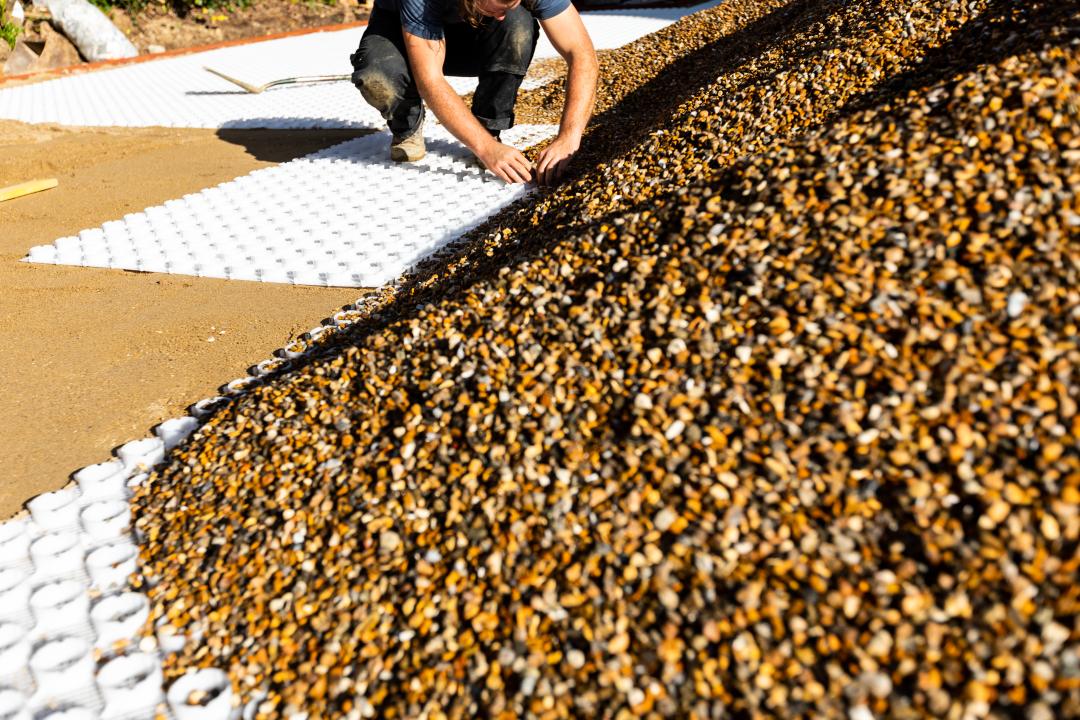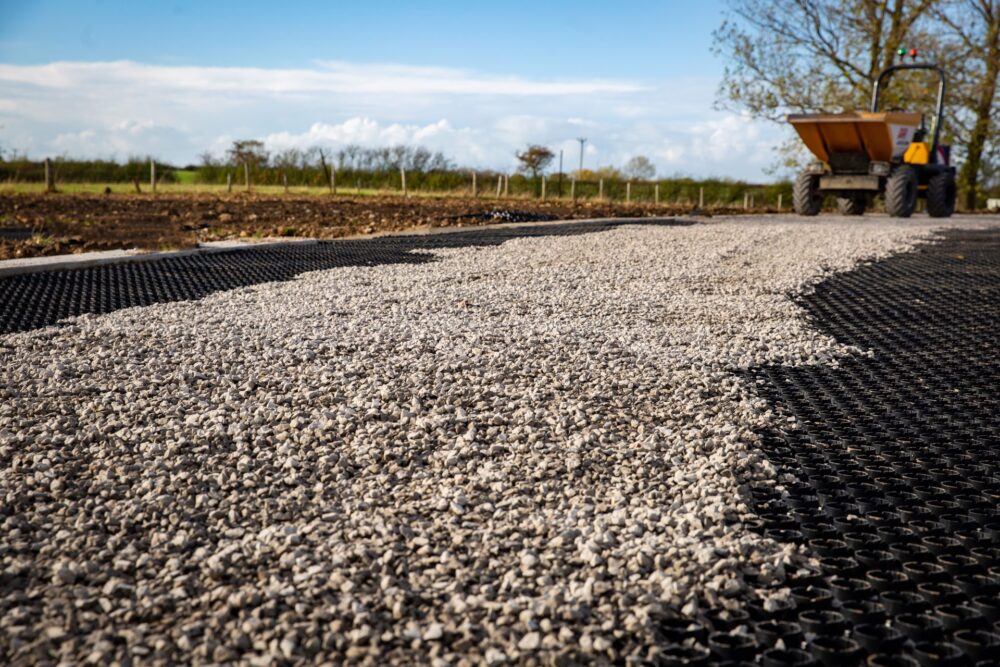A gravel driveway provides a distinct and high-end first impression to a home but there are three crucial steps that need to be taken in order to create a perfect gravel driveway. Here we outline those three key steps in the process of installing a new gravel driveway, the most important of which is to lay a gravel driveway grid system.
Step 1 – Take time on the design of your gravel driveway
Visualise how you want your gravel driveway to look. Is there room for a luxurious sweeping curve or a turning circle? Maybe there’s a requirement to maximise parking. Do your research beforehand and maybe look online for inspiration or around your neighbourhood for design ideas for gravel driveways that you would like to emulate.
Step 2 – Careful and thorough preparation of the ground
Proper preparation is vital to ensuring an optimum final finish to your new gravel driveway. The majority of driveways require excavating first, to remove topsoil at the very least, in order to expose a layer of firm subsoil. If any soft areas remain, they should be filled with a compacted sub-base.
Next, a suitable heavy-duty geotextile membrane, such as Drivetex, should be laid to stabilise the ground. This driveway membrane should be secured with fixing pegs to ensure there’s no movement.
This should be followed by a level firm sub-base, typically MOT Type 1 aggregate or Type 3 for porous, SuDS-compliant installations. It needs to be an appropriate depth for the intended traffic, allowing around 150mm for cars or deeper if it’ll be used for heavier vehicles. The sub-base should then be covered with a thin layer of sharp sand or granite fines to level out any undulations.
Step 3 – Install a gravel driveway grid system
This is the step that is all too often overlooked and yet is the key to creating a long-lasting gravel driveway that doesn’t suffer from stone migration, deep ruts or inconsistent gravel coverage.
Gravelrings gravel retention system from Beauxfort features interlocking gravel grid tiles, designed to be laid on to a sub-base. Placed mesh side down to prevent gravel slipping beneath and lifting the grid, the circular cells of the Gravelrings system should be overfilled to hide the grid from view. However, the cell structure also works to stop the gravel from moving on the driveway, and from migrating off the driveway and on to the road, flower beds and grass.
Available in black or white to blend with your choice of gravel for your driveway, Gravelrings gravel grid mats have the flexibility required to follow the natural contours of the driveway and also to be easily cut to the required shape.
Three steps to the perfect gravel driveway
Follow these three steps when installing your new gravel driveway, or upgrading an existing gravel driveway and with Gravelrings gravel driveway grids you will be assured of years of stable, hassle-free use.
Achieve the perfect gravel driveway with the Beauxfort Gravelrings system. Check out our website www.beauxfort.com for more information about the Beauxfort landscape systems and design inspiration, and to download the Beauxfort Distinctive Landscape Systems brochure and request a free sample. Or talk to our friendly team about your project by contacting us on 0330 055 2599 or info@beauxfort.com.



